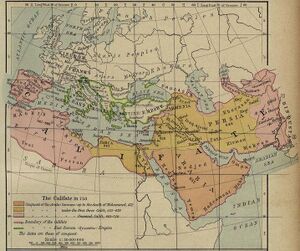Nishapur

Nishapur or Nishabur (Hindi: नीशापूर, Persian: نیشابور, Romanized:Nīshāpūr, Nīshābūr, Neyshābūr, Naishapur from Middle Persian: New-Shabuhr, meaning "New City of Shapur", "Fair Shapur", or "Perfect built of Shapur"), is a city in the Razavi Khorasan Province, capital of the Nishapur County and former capital of Khorasan, in northeastern Iran. It is situated in a fertile plain at the foot of the Mount Binalud.
History
The city was founded in the 3rd century by Shapur I as a Sasanian satrapy capital.
Nishapur later became the capital of Tahirid dynasty and was reformed by Abdullah Tahir in 830, and was later selected as the capital of Seljuq dynasty by Tughril in 1037.
From the Abbasid era to Mongol invasion of Khwarezmia and Eastern Iran, the city evolved into a significant cultural, commercial, and intellectual centre within the Islamic world.
Nishapur, along with Merv, Herat and Balkh was one of the four great cities of Greater Khorasan and one of the greatest cities in the middle ages, a seat of governmental power in eastern of caliphate, a dwelling place for diverse ethnic and religious groups, a trading stop on commercial routes from Transoxiana and China, Iraq and Egypt.
The city reached the height of its prosperity under the Samanids in the 10th century, but was destroyed by Mongols in 1221, and further ruined by other invasions and earthquakes in the 13th century.
After that time, a much smaller settlement was established just north of the ancient town, and the once bustling metropolis lay underground—until a team of excavators from the Metropolitan Museum of Art arrived in the mid-20th century. They worked at Nishapur between 1935 and 1940, returning for a final season in the winter of 1947–48. What remains of old Nishapur region is a 3500 hectares "Kohandejh" area, south of the current city of Nishapur.
Nishapur occupies an important strategic position astride the old Silk Road that linked Anatolia and the Mediterranean Sea with China. On the Silk Road, Nishapur has often defined the flexible frontier between the Iranian plateau and Central Asia.
The Founder
The town derived its name from its reputed founder, the Sassanian king Shapur I, who is said to have established it in the 3rd century CE.
Location and Importance
Nearby are the turquoise mines that supplied the world with turquoise for at least two millennia. It became an important town in the Khorasan region but subsequently declined in significance until a revival in its fortunes in 9th century under the Tahirid dynasty, when the glazed ceramics of Nishapur formed an important item of trade to the west. For a time Nishapur rivaled Baghdad or Cairo: Toghrül, the first ruler of the Seljuk dynasty, made Nishapur his residence in 1037 and proclaimed himself sultan there, but it declined thereafter, as Seljuk fortunes were concentrated in the west. In the year 100 0CE, it was among the 10 largest cities on earth.[1] After the husband of Genghis Khan's daughter was killed at Nishapur in 1221, she ordered the death of all in the city (~1.7 million), and the skulls of men, women, and children were piled in pyramids by the Mongols. This invasion and earthquakes destroyed the pottery kilns. In 1979, the 15th World Scout Jamboree was scheduled to be held in Nishapur, but it was cancelled because of the uprising against the Shah of Iran led by AyatollahKhomeini .

